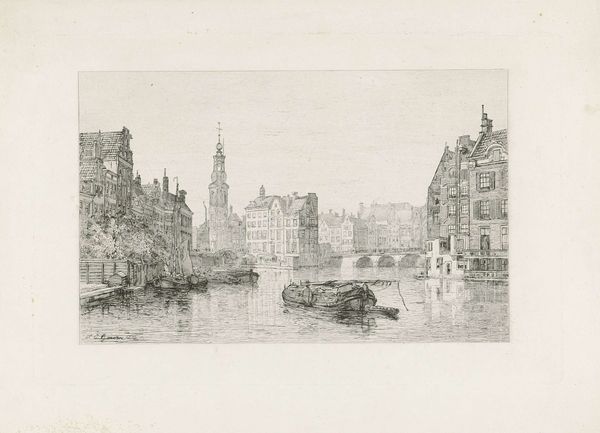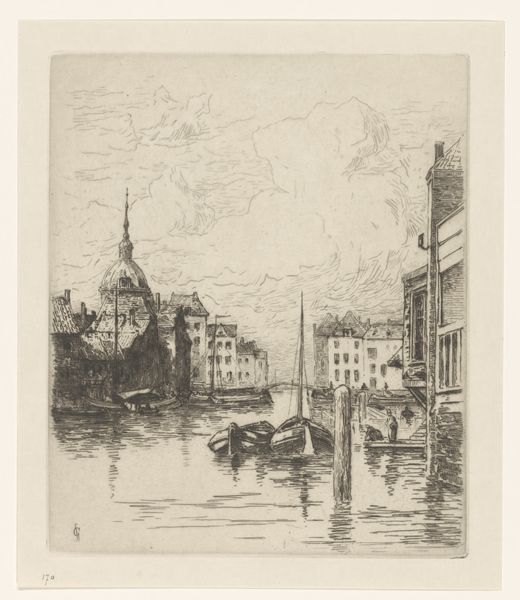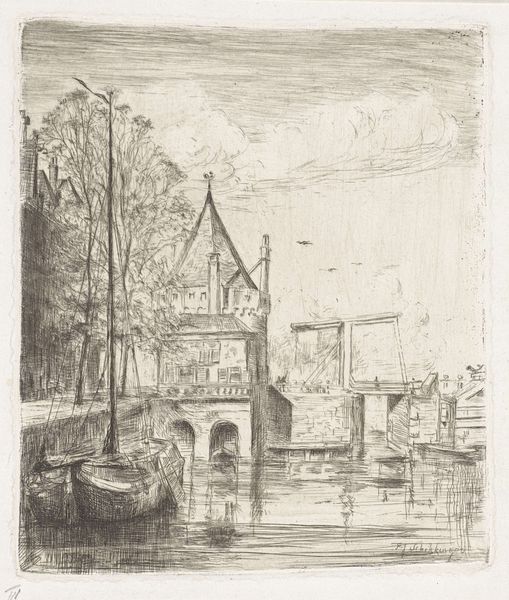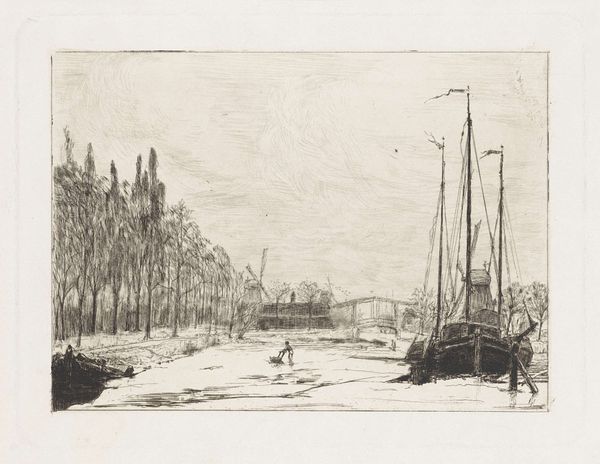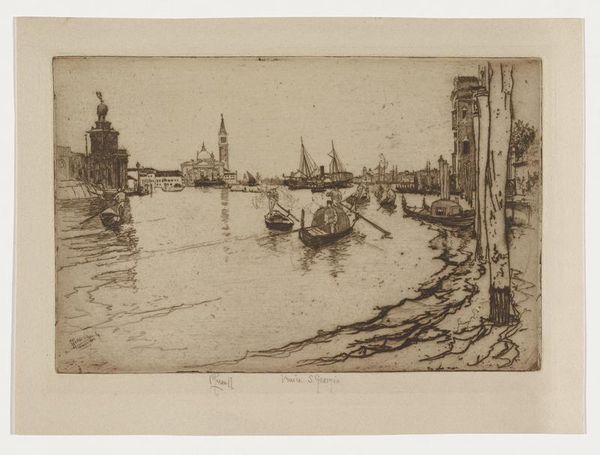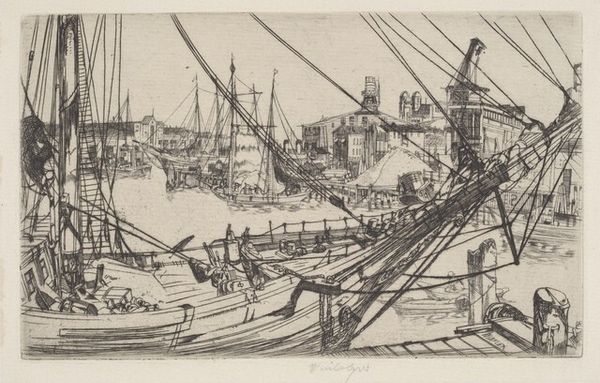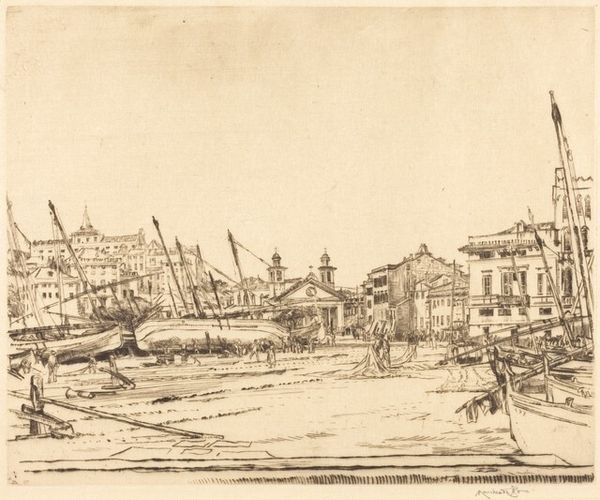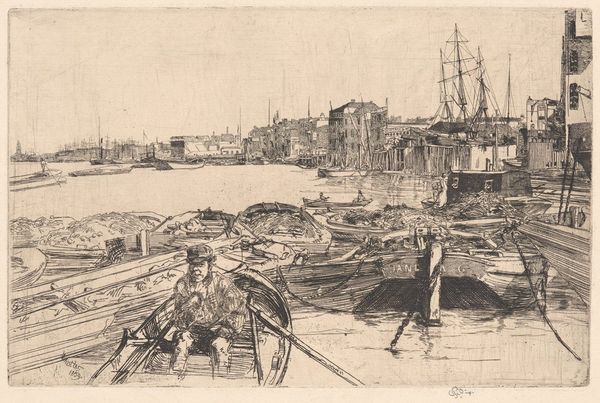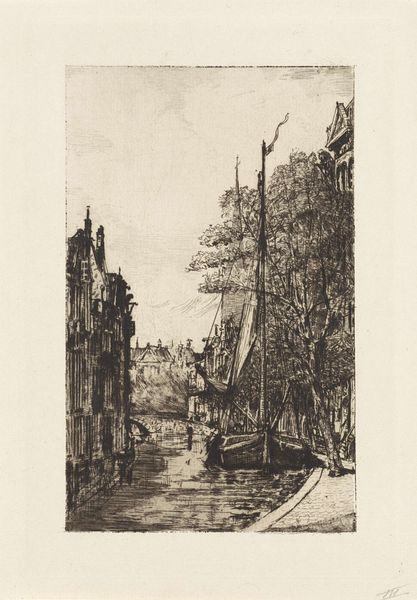
Copyright: National Gallery of Art: CC0 1.0
Editor: Here we have David Young Cameron's "Sketch of Venice" from 1896, an etching. It has a delicate, almost fleeting quality, like a memory. I’m particularly struck by how he captures the essence of Venice with such sparse lines. What do you make of this work? Curator: This etching offers a glimpse into the cultural phenomenon of Venice as a subject for artists. By the late 19th century, Venice was becoming less important as a powerful nation-state and more attractive as a tourist destination, a site of picturesque ruins and artistic inspiration. Cameron’s print engages with this changing image. Notice how the artist focuses on the geometric patterns formed by the buildings and the ships, giving a somewhat clinical assessment in his interpretation of an ethereal and romantic place. Does it remind you of other cityscapes from this period? Editor: I can see how it ties into the interest in cityscapes and architectural studies, almost like a documentation. Curator: Exactly. The late 19th century witnessed a rise in printmaking as a means of mass communication and distribution of images, therefore artworks could circulate, shaping and reinforcing cultural perceptions. How do you think the medium of etching contributed to that broader public understanding of places like Venice? Editor: Because it's reproducible, more people could see it, making Venice seem more accessible and relatable to wider audiences. It's no longer just for the wealthy. Curator: Precisely. Artists like Cameron were not just creating beautiful images, they were actively shaping the visual culture of their time. Editor: It’s amazing to see how a single image can reflect larger societal shifts and artistic trends! Curator: Indeed. It's a reminder that art doesn't exist in a vacuum but is intertwined with the politics and culture of its era.
Comments
No comments
Be the first to comment and join the conversation on the ultimate creative platform.


